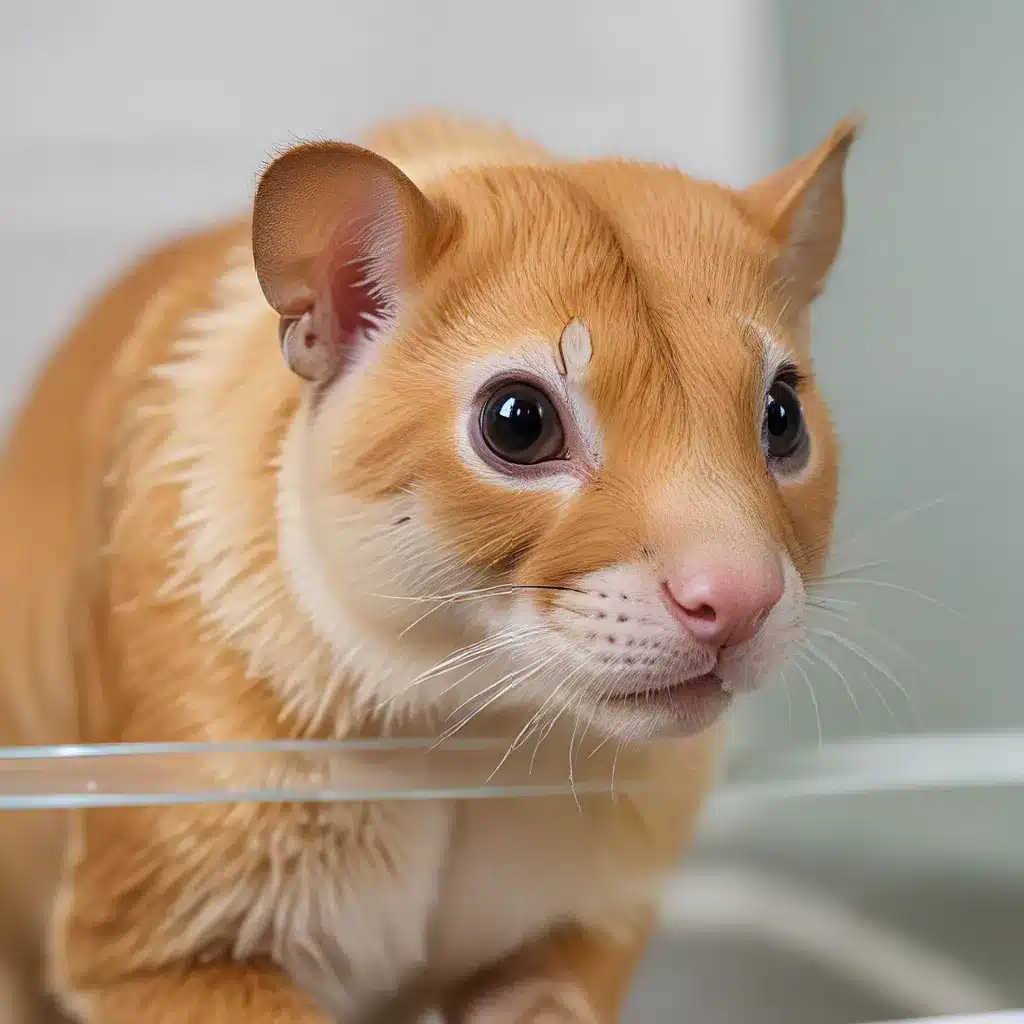
Navigating the Quarantine Maze: Safeguarding Your Exotic Companion
Ah, the joys of welcoming a new exotic pet into your home! The anticipation, the excitement – it’s almost palpable. But hold on, my friend. Before you dive headfirst into the world of feathers, scales, and fur, there’s a crucial step you can’t afford to overlook: quarantine.
I know, I know. It might not be the most glamorous part of the process, but trust me, this quarantine business is as vital as a seatbelt on a rollercoaster. It’s the difference between a harmonious, healthy home and a potential disaster waiting to happen. And let me tell you, I’ve seen my fair share of exotic pet mishaps over the years – trust me, you don’t want to be on the receiving end of that.
Quarantine 101: The Essentials
Alright, let’s dive in. Quarantine is the process of isolating your new exotic companion to observe its behavior, conduct necessary health tests, and help it acclimate to its new environment. It’s not just a good practice – it’s an absolute must. Why, you ask? Well, the inadvertent introduction of diseases can lead to not only frustration but also significant financial burdens. And let’s not forget the emotional toll it can take on you and your beloved pet.
In the past, quarantine durations followed a one-size-fits-all approach. But these days, modern practices have evolved to tailor the process based on the species and unique circumstances surrounding your pet. This personalized approach ensures the health and comfort of your new scaly, feathery, or furry friend, taking into account the nitty-gritty details like their origin and health history.
Assessing the Risks: A Comprehensive Approach
Before you even start planning the quarantine, it’s crucial to conduct a thorough risk assessment. This involves delving into the potential presence, exposure, and consequences of diseases that could be lurking in your new pet’s past. Think of it as a deep dive into their medical history and previous living conditions.
As the experts at Colorado Exotic Animal Hospital explain, this comprehensive process includes reviewing detailed medical records, gaining insights into the pet’s previous environment, and effectively communicating potential risks. These details empower you to make informed decisions during the quarantine period.
But wait, there’s more! The results of the risk assessment act as a guide for determining the length of quarantine and specific testing requirements. For pets with an unknown health history, a minimum 90-day quarantine is recommended, offering a robust period for observation and testing. On the other hand, pets from well-documented sources may benefit from shorter quarantine periods.
Creating a Quarantine Sanctuary
Alright, let’s talk about the nitty-gritty of setting up your quarantine station. Crafting a separate space with meticulous care routines is fundamental to prevent cross-contamination. Thoughtful considerations such as proper enclosure setup, substrate choices, and regular disinfection procedures play a crucial role in providing a comfortable and secure environment for your pet during this transitional phase.
Remember, your new exotic companion is navigating a whole new world, and the quarantine period is essential for their physical and emotional well-being. So, it’s not just about keeping them isolated – it’s about creating a sanctuary where they can feel safe, secure, and given the time they need to adjust.
Monitoring and Testing: Keeping a Watchful Eye
Throughout the quarantine period, a detailed physical examination, identification measures, and consistent behavioral monitoring are paramount. Screening for infectious agents, including fecal examinations, ensures a proactive approach to your pet’s overall health. After all, an ounce of prevention is worth a pound of cure, am I right?
And let’s not forget the importance of following the appropriate travel regulations when it comes to bringing your exotic pet into a new country. From securing the necessary paperwork to understanding airline restrictions, it’s a crucial part of the process that can’t be overlooked.
The Grand Finale: Introducing Your Exotic Companion
Ah, the moment you’ve been waiting for – the end of the quarantine period! But hold your horses, my friend. Just because the isolation has come to an end doesn’t mean the hard work is over. Introducing your exotic pet to its new forever home requires a delicate touch and a well-thought-out plan.
Remember, your pet has been through a lot – new sights, new sounds, new smells. It’s crucial to take things slow and let them acclimate at their own pace. Sudden changes or overwhelming stimuli can send even the calmest of critters into a tailspin.
So, take a deep breath, put on your patient pants, and get ready to witness the magic of a smooth and successful introduction. After all, Golden Exotic Pets is here to guide you every step of the way.
Embracing the Quarantine: A Key to Lifelong Companionship
In conclusion, quarantine emerges as a pivotal step in safeguarding your exotic pet from potential health risks. By embracing a personalized approach that considers your pet’s unique details, you not only enhance their well-being but also contribute to the creation of a safe and secure home environment.
So, my fellow exotic pet enthusiasts, don’t let the quarantine blues get you down. Instead, see it as an opportunity to build a strong foundation for a lifelong bond with your new feathery, scaly, or furry friend. Trust me, the rewards of a healthy, happy pet are worth every minute of the quarantine process.
And let’s not forget the crucial role that organizations like CSIRO play in ensuring the safety and well-being of our beloved animals. Their diagnostic tests and rapid response to disease outbreaks are a testament to the importance of vigilance and preparedness.
So, are you ready to embark on this quarantine adventure? I know I am! Let’s do this, and let’s do it right. Your pet – and your peace of mind – will thank you for it.

